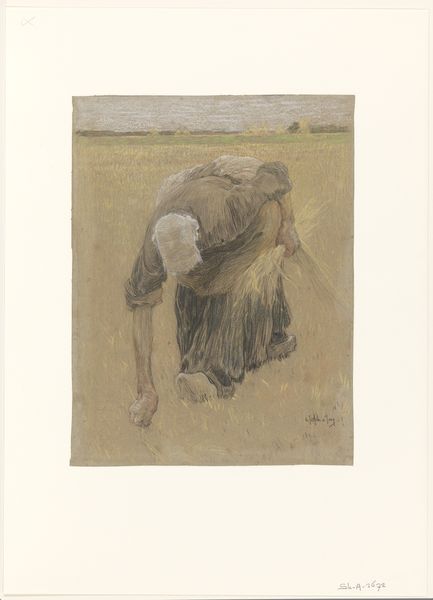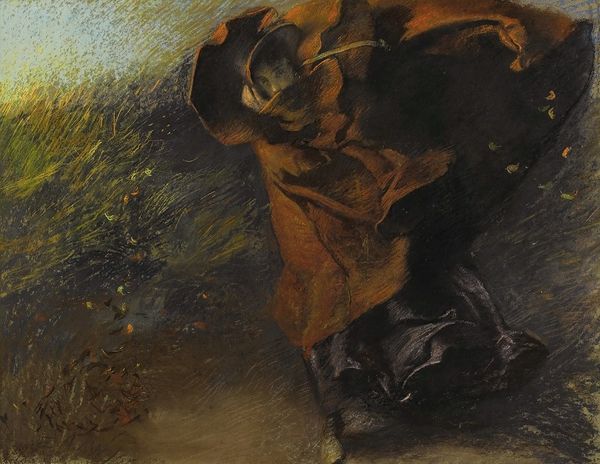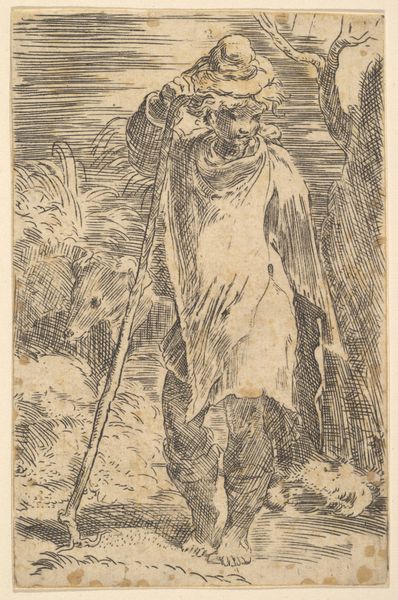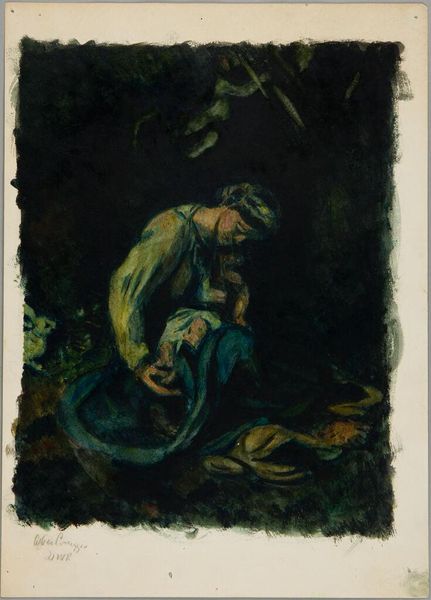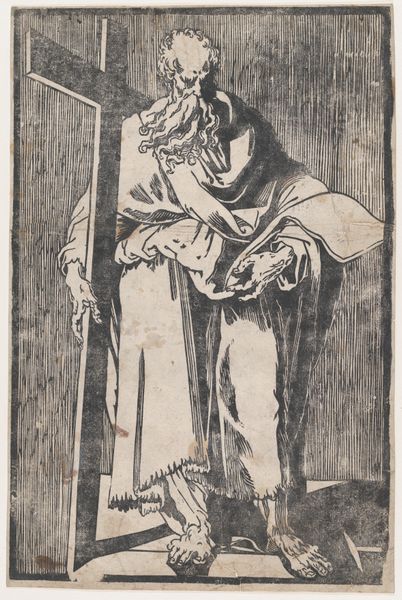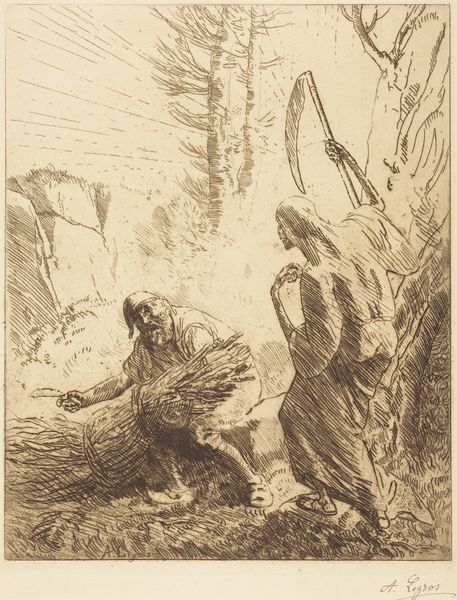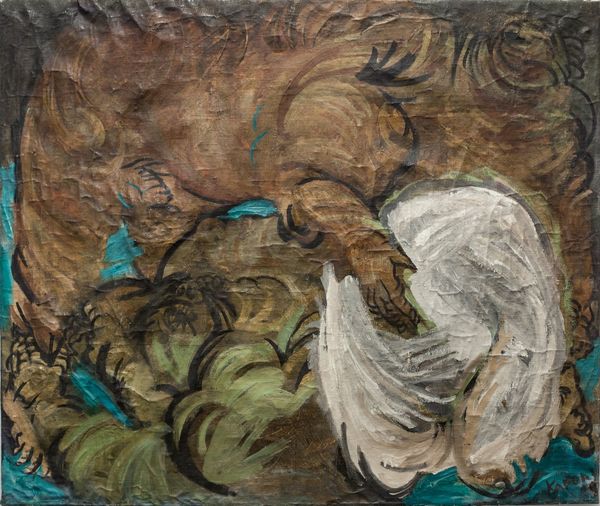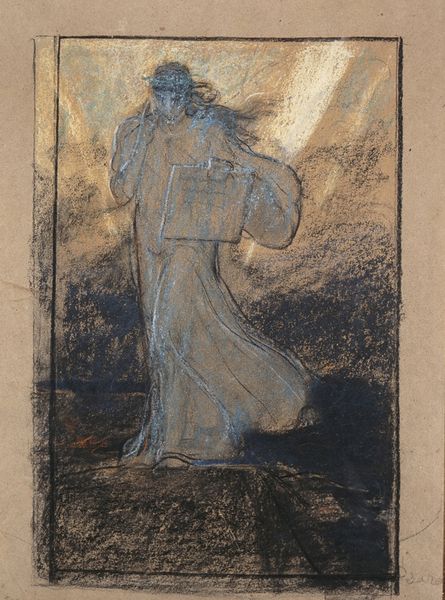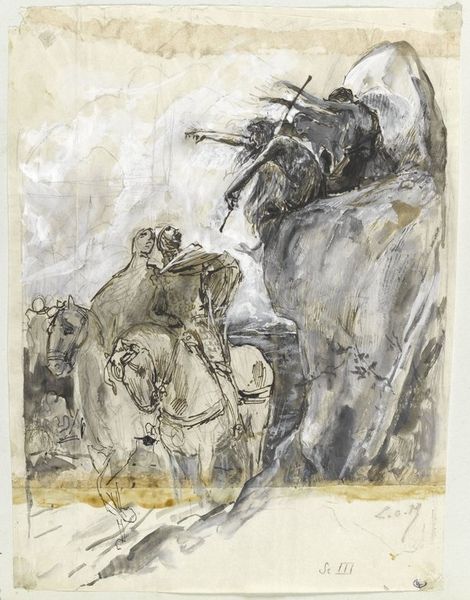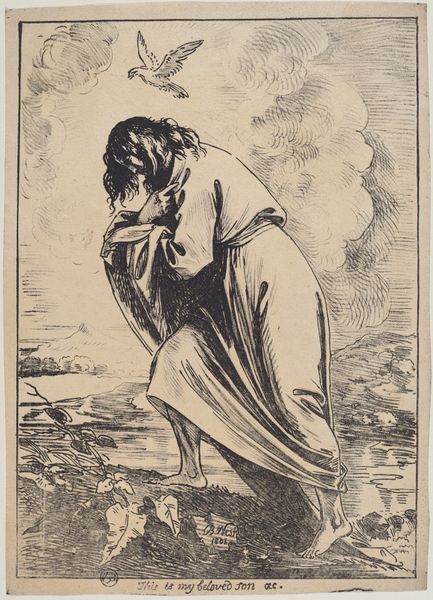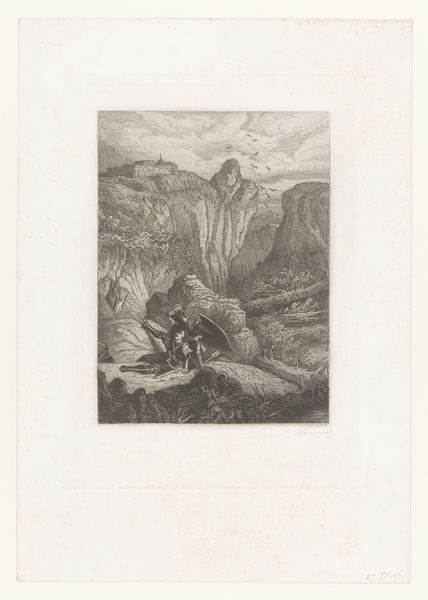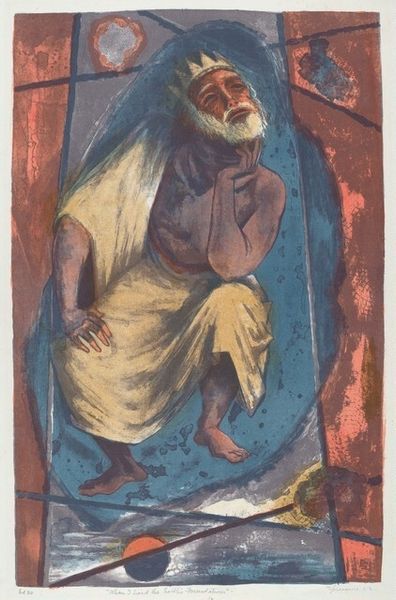
Copyright: Public domain
James Tissot made "The Sower" using watercolor and graphite, two mediums with very different material properties. The graphite provides structure and detail through linear precision. The watercolor, on the other hand, allows for washes of color to imbue the work with atmosphere and light. Look at the figure of the sower: his body is built up using graphite, while his clothing is made of translucent color. Through the artist's application, we see the weight of his labor as he strides across the field. Tissot used watercolor to capture the way in which the man blends into the landscape. Watercolor especially lends itself to this effect, as the artist uses pigment in suspension to capture the essence of color, light, and air. By combining traditional art techniques with a subject rooted in physical labor, Tissot elevates the everyday to a place of artistic importance, reflecting on the social conditions of his time. This work highlights the importance of understanding both the materials and the making to fully appreciate the artwork’s meaning and impact.
Comments
No comments
Be the first to comment and join the conversation on the ultimate creative platform.
